UITP: 140 years of mobility and one question that remains as relevant as ever
Before the Summit in Hamburg begins, it is worth taking a closer look at what UITP is.
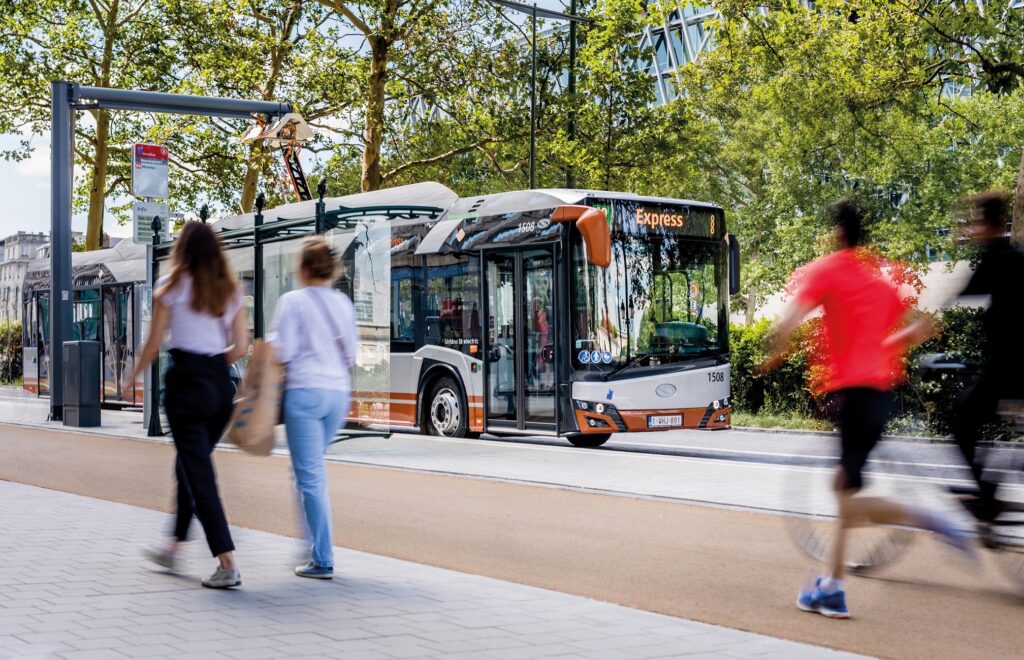
Typically, a bus stop is approached in purely technical terms. A few glass walls displaying the timetable, a bench for waiting comfortably and a canopy to protect against rain. Bus transfer points usually function as a kind of storage container for people waiting to be transported to another point, where time is inevitably lost. With modern bus stops, this does not have to be the case!
With the development of sustainable mobility and public transport, more and more bus stops are being transformed into inspiring public spaces. Such a seemingly small change can improve the travel experience and encourage city dwellers to use public transport. More importantly, it’s an opportunity to create new attractive and cultural features in the urban landscape. Places to socialise and lounge among the plants, to read a map of the area and get practical information, or even to enjoy the performances of street artists. And to get on a bus or tram.
Bus stop design can therefore be a fascinating challenge to create innovative and attractive places.
Here are some ideas for attractive and welcoming bus stops in the city:
The green details around bus stops, such as plants or trees, not only contribute to the attractiveness of the place, but also help to improve air quality by absorbing carbon dioxide and producing oxygen. Vertical gardens can be created on the walls of a bus stop, and even small trees can be planted to provide shade for waiting passengers. More and more bus stops have a vegetated roof, which improves air quality, absorbs rainwater and becomes an urban meadow, providing food and shelter for urban insects. Green bus stops are now a feature of hundreds of European cities, not just major metropolises.

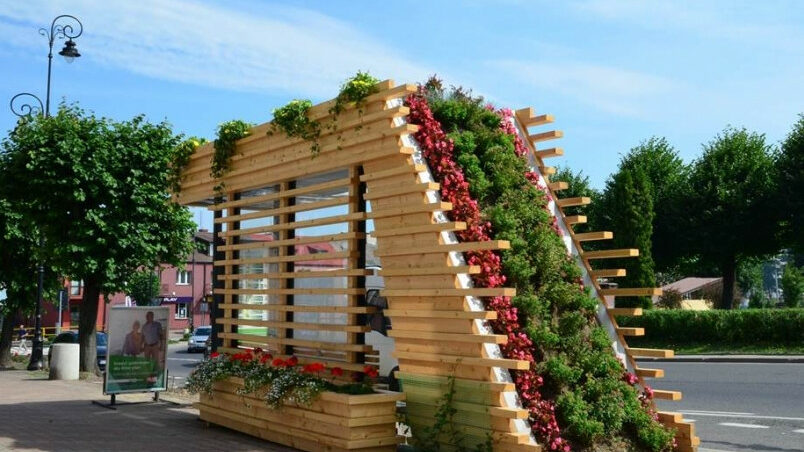
Solar panels can be installed on the roof of a bus stop to produce the energy needed to power the bus stop lighting, timetable information and mobile phone chargers. Energy recovery systems from the tram’s braking cycle, which convert kinetic energy into electricity, can also be installed.

Passenger comfort at the bus stop is key to improving the quality of the journey. Ergonomic benches or chairs can be designed in many ways to make waiting for a bus or tram as painless as possible. Ingenuity knows no bounds; at an innovative bus stop in Singapore, for example, instead of a chair, a… swing has been installed.
Municipalities can consider providing heating at bus stops, such as heaters or heated seats, to help passengers relax and feel comfortable in cold climates. Similarly, providing adequate ventilation and cooling at bus stops is useful in hot weather.
Air purifiers can also be installed at bus stops to improve air quality in the city and protect the health of public transport users. Similar bus stops can now be found in London and Hong Kong.
A unique and innovative Station-of-Being project has been created in the Swedish city of Umea, just below the Arctic Circle. This interactive ‘Arctic’ bus stop has been designed to create a unique experience for passengers.
The bus stop offers comfortable seating integrated with a canopy to protect from the wind and rain. The bus stop is also heated for passengers travelling in cold weather. The layout has been designed to encourage socialising, with rest, seating and meeting areas, as well as elements such as a fountain and cycle zone to encourage active travel at the stop. This unique venue also features interactive touch screens providing information on timetables and local tourist attractions.
Modern bus stops have the potential to become more than just places to wait for transportation; they can also be educational spaces. They can provide a range of information panels about the area’s history, culture and attractions and, using modern technology, provide passengers with multimedia access to content such as tourist audio guides. Stops can also provide information on sustainable transport and encourage the use of public transport.
Sustainable bus stops with an educational role exist in London and Copenhagen. Similar multimedia stops have also appeared in Krakow on World Book Day, introducing travellers to writers associated with Krakow.
In Curtiba, Brazil, some of the stops, designed as glass tubes, feature ‘Tuboteca’, small interchangeable libraries that make waiting time more pleasant for passengers.
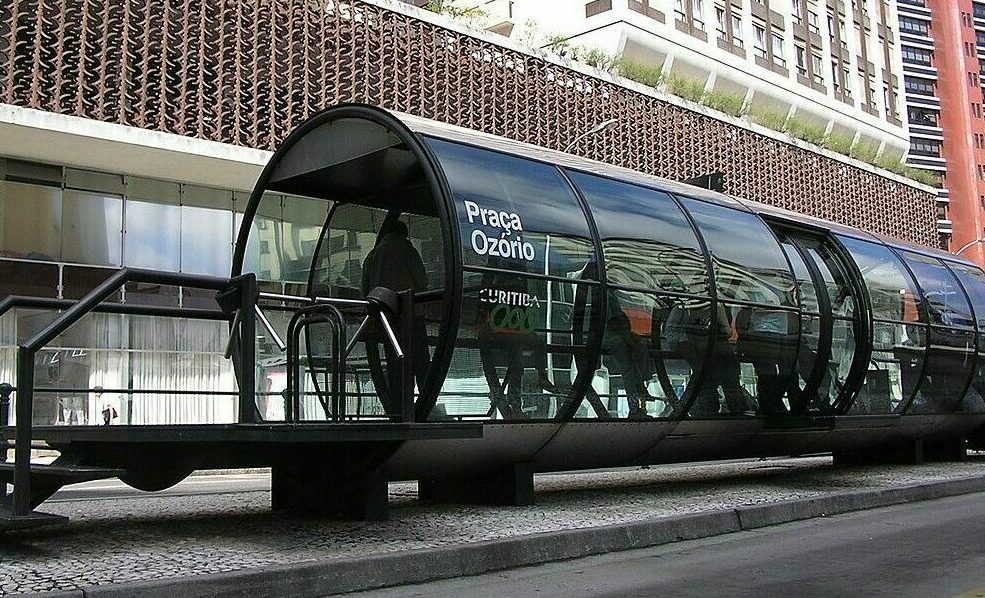
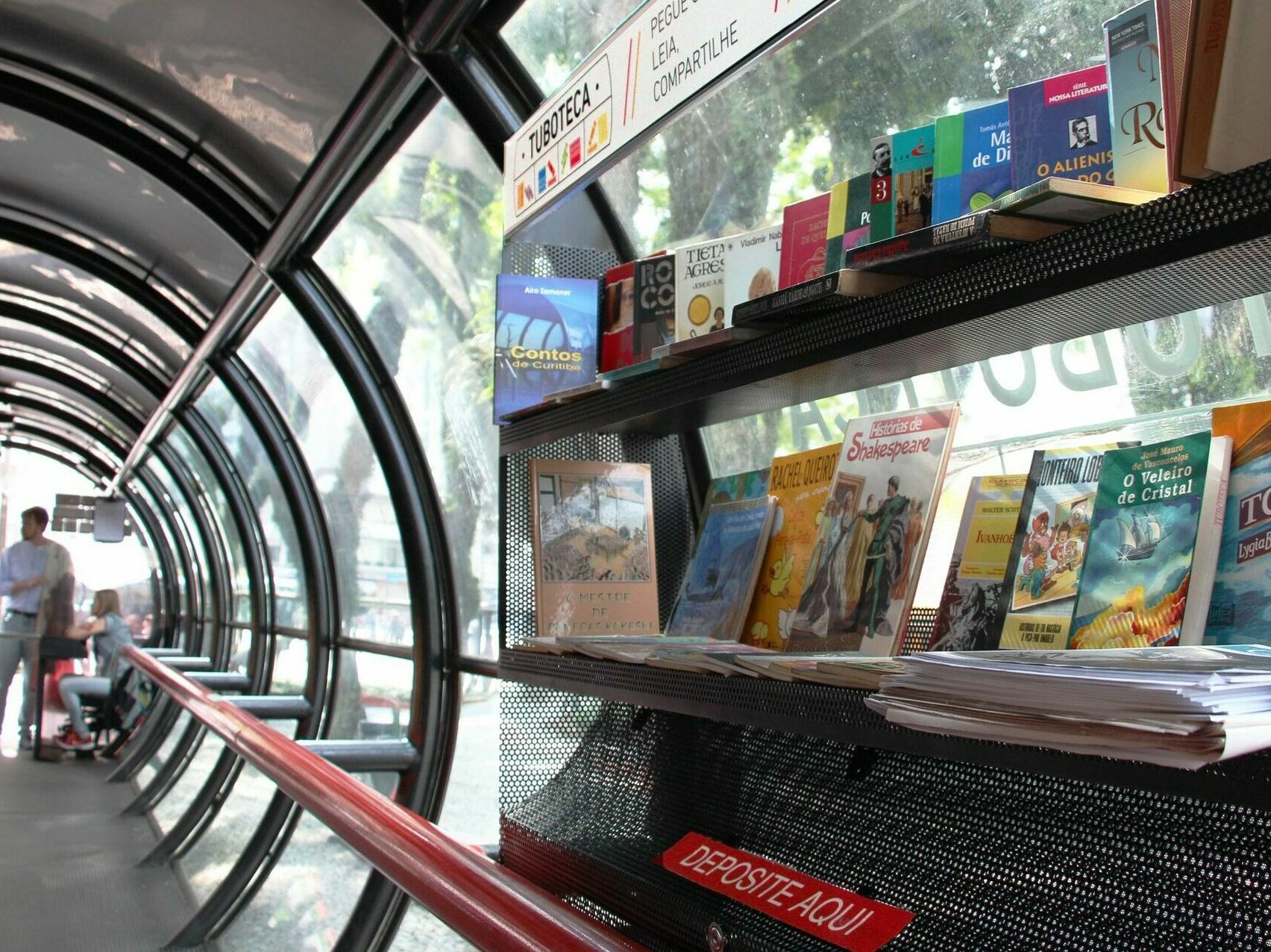
Bus stops can undoubtedly provide a platform for art and culture. Decorated with murals, sculptures or art installations, they create an attractive space and a unique place on the city map.

The bus stop itself has often been used by architects as an opportunity to create unique works of architecture. Bus stops can take the form of futuristic glass and steel structures,
picturesque nature-inspired pavilions or even artistic installations with unusual shapes that attract the attention of passers-by and add character to the surroundings.
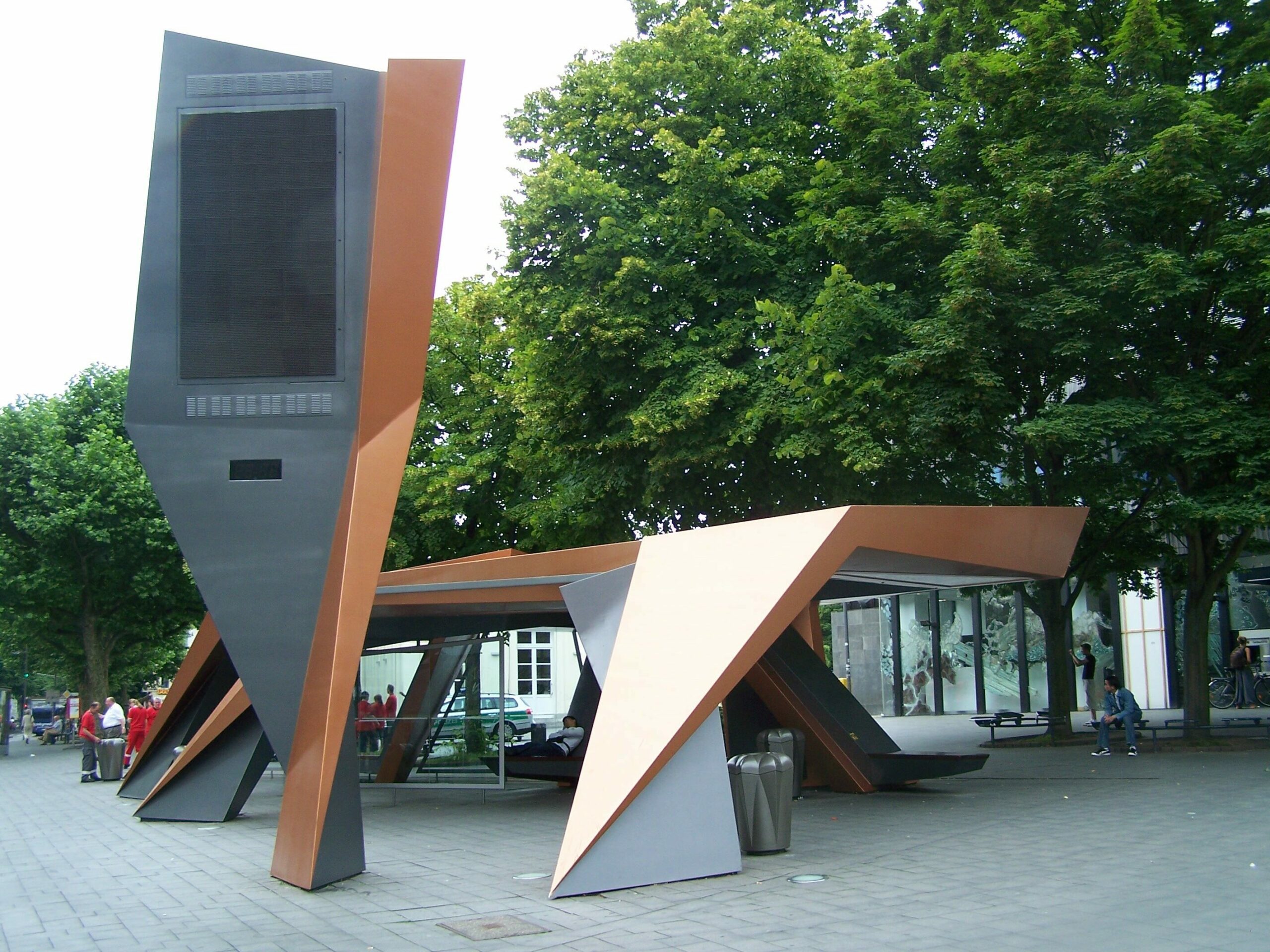

Recognising the tourist potential of this inconspicuous element of urban space, the small Austrian town of Krumbach invited architects to participate in the Bus:Stop initiative, challenging them to design original and innovative bus and tram stops that would blend into the surrounding landscape and become an attraction in their own right. The results of their work exceeded expectations, creating bus stops of exceptional aesthetics and functionality. The project itself has helped promote Krumbach as a town with a unique approach to architecture and design, attracting the attention of locals and tourists from around the world.


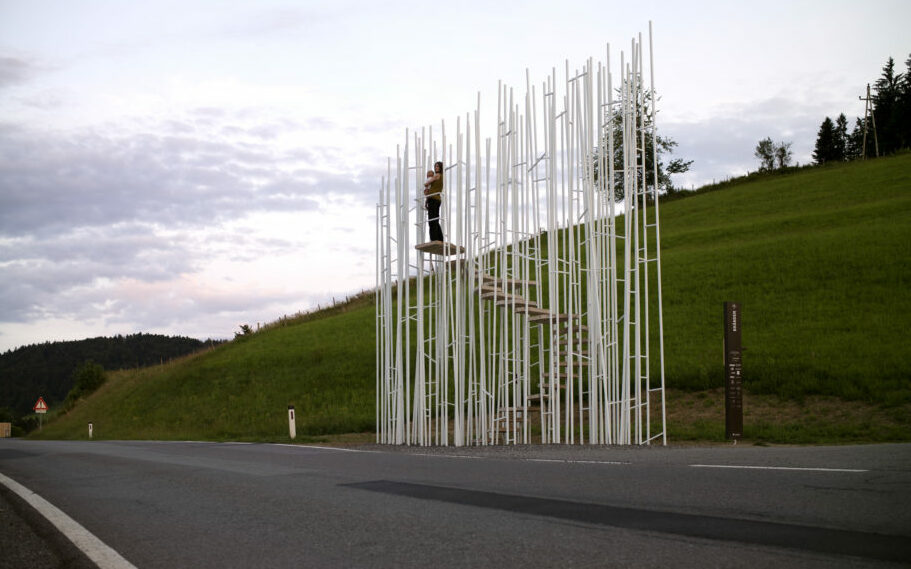
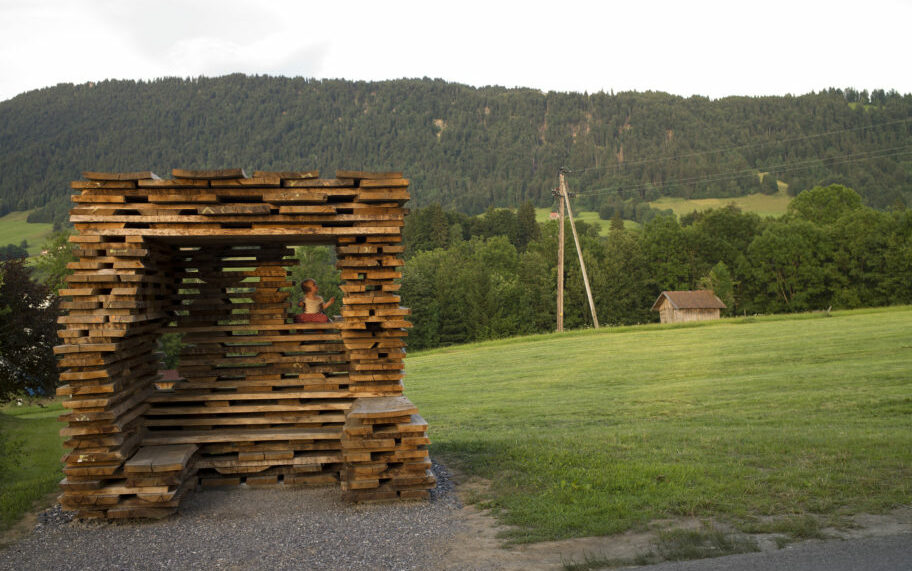
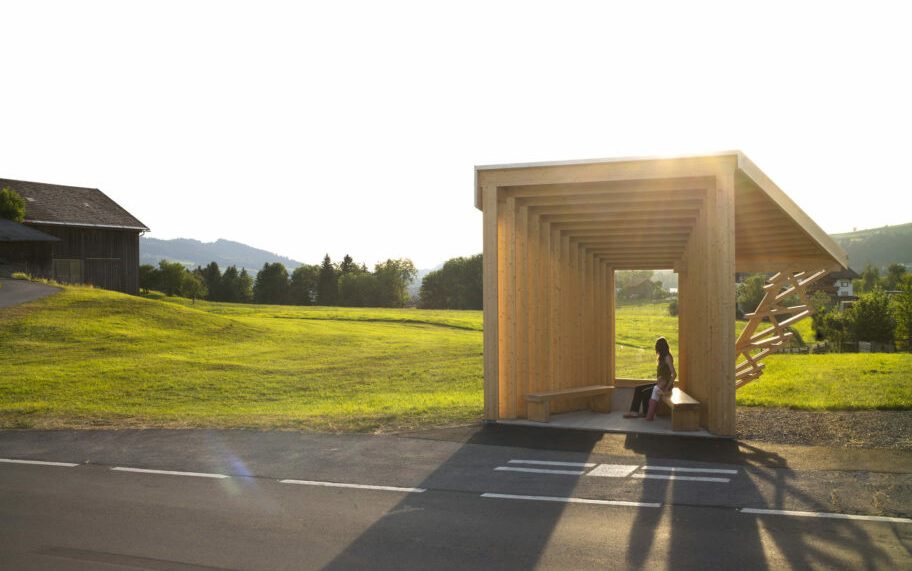
But the bus stop is also about functionality. They should be properly signposted and provide details of timetables, bus routes and other relevant passenger information.
Nowadays, bus stops are often equipped with touch screens and interactive information panels. The use of modern technology can make a bus stop more efficient and convenient for passengers. For example, you can install intelligent monitoring systems to provide information on bus arrival times, proximity card readers for cashless payments or chargers for mobile devices.
In the digital age, it is expected that bus and tram stops will be equipped with technology and interactive touchscreens, allowing passengers to check timetables, plan routes, use maps and get connection information. Services such as hailing taxis, car sharing and bike hire may also be available. Such transfer points already exist in Seoul, Singapore and Paris.
The use of advanced data collection systems at modern bus stops, such as smart passenger counters, will provide city managers with valuable information on traffic flows and passenger preferences, leading to better scheduling and route planning.
Bus and tram stops, especially at interchanges, must be points of integration between different modes of transport. The infrastructure should be designed to ensure smooth and comfortable transfers between the different modes. Interchanges can be equipped with facilities for urban cycling, car sharing or bicycle parking. This gives passengers the flexibility to use different modes of transport according to their needs.
Back in 2013, researchers at the university, found that long waiting times for a bus, trolleybus or tram were one of the main reasons for abandoning public transport. In this respect, it is crucial that bus stops are transformed from mere transfer points into friendly and functional spaces where waiting for the bus is pleasant. Bus stops should be an integral part of the urban spatial plan, becoming spaces for people, ensuring comfort and convenience for all public transport users.
Before the Summit in Hamburg begins, it is worth taking a closer look at what UITP is.
Learn more about the changes introduced by GSR2 and how they contribute to protecting all road users.
BRT in Aalborg: the city's solution for enhancing urban transport – what makes it so effective?